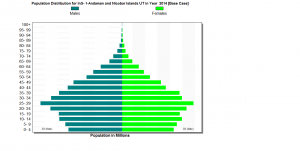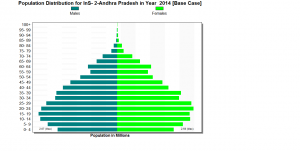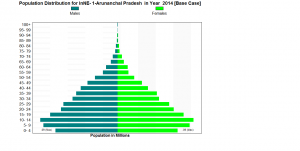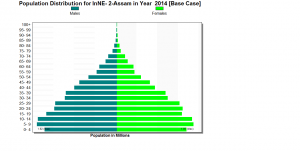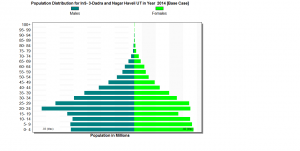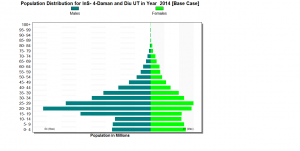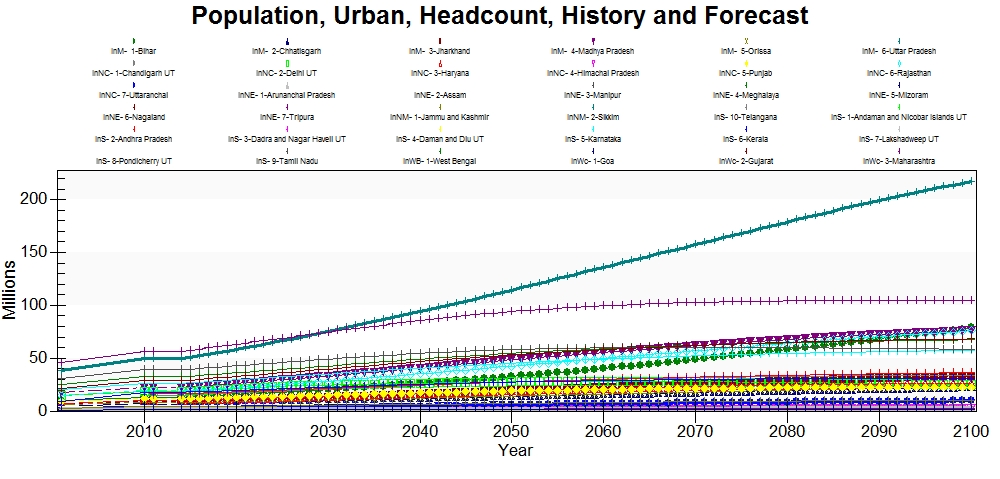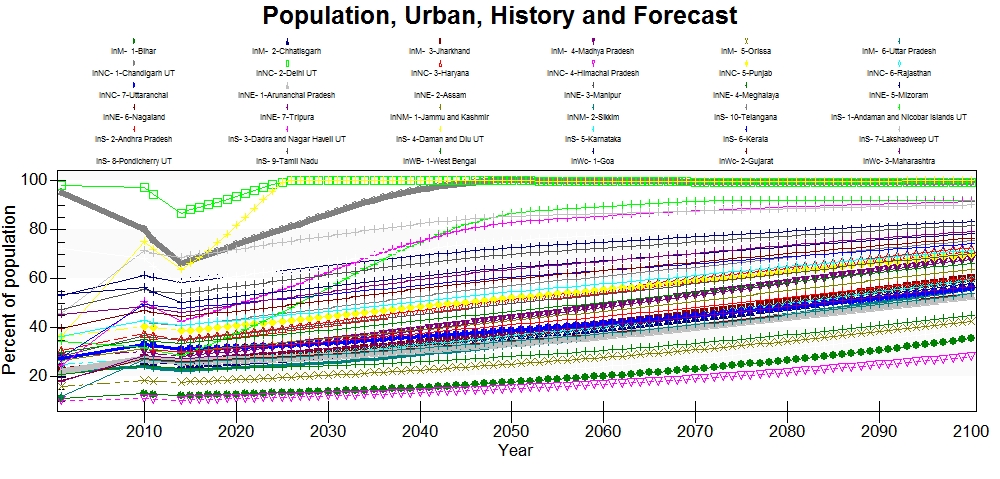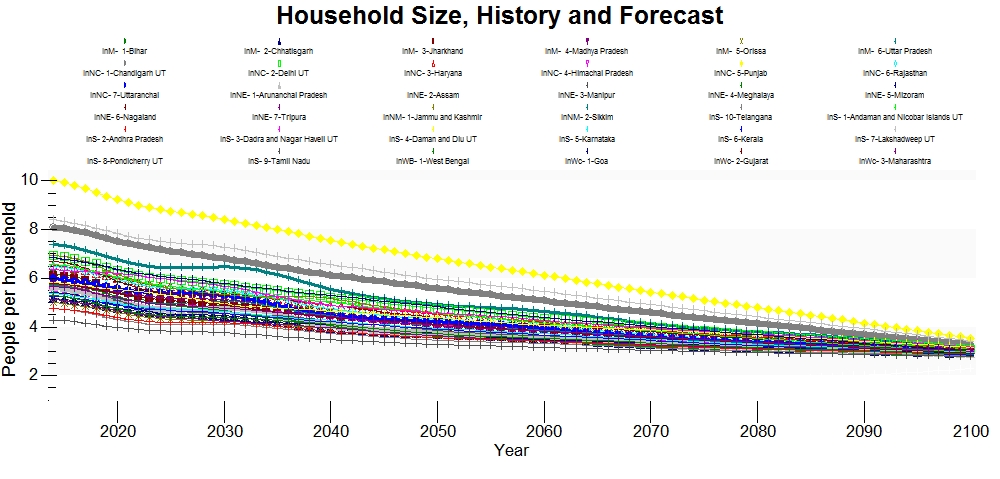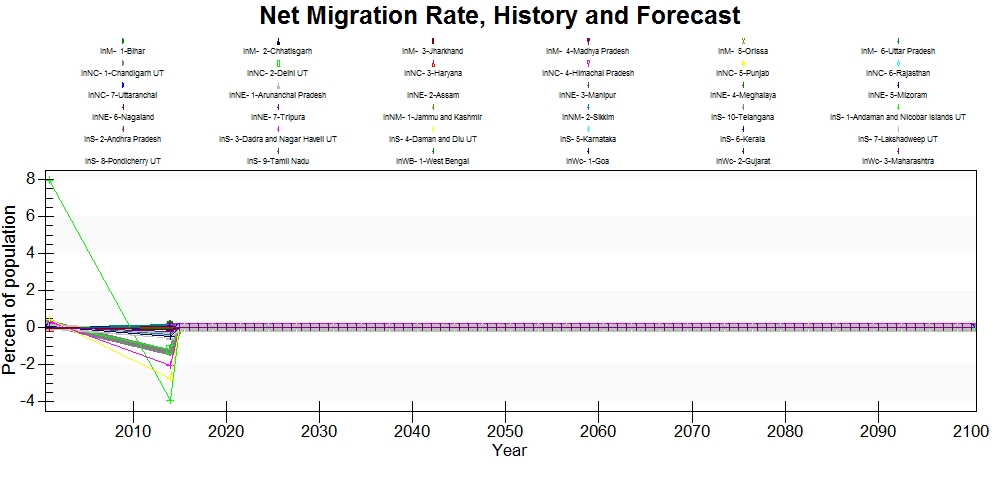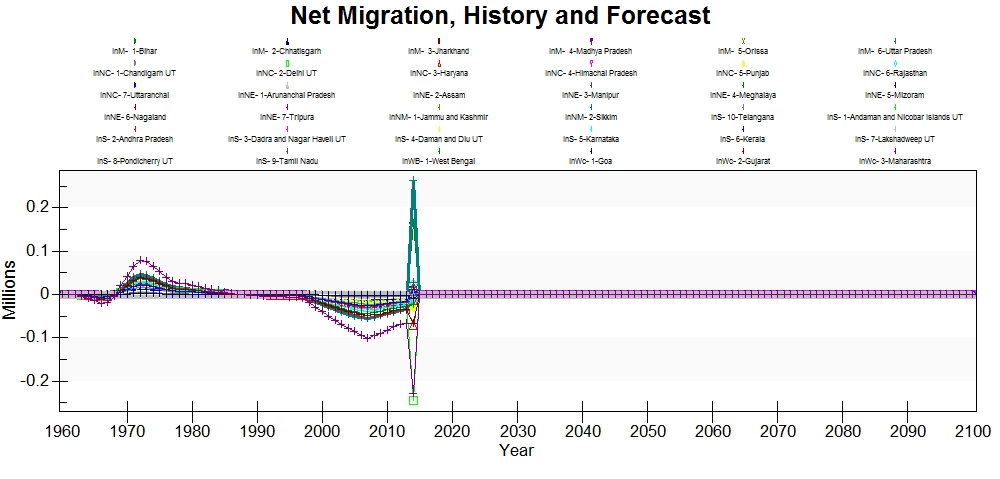India's Population Data: Difference between revisions
AltheaDitter (talk | contribs) No edit summary |
AltheaDitter (talk | contribs) No edit summary |
||
| Line 26: | Line 26: | ||
The age-sex cohort data came from the [[2011_Census|2011 Census]]. This data was published in single year cohorts and was aggregated into the five-year cohorts that are used in the model. The state of Telangana was estimated by summing the districts that make up present day Telangana and Andhra Pradesh was estimated in the same manner. | The age-sex cohort data came from the [[2011_Census|2011 Census]]. This data was published in single year cohorts and was aggregated into the five-year cohorts that are used in the model. The state of Telangana was estimated by summing the districts that make up present day Telangana and Andhra Pradesh was estimated in the same manner. | ||
[[File:AndamanandNicobarIs2014ASC.png | [[File:AndamanandNicobarIs2014ASC.png|right|middle|300px|AndamanandNicobarIs2014ASC.png]][[File:AndhraPradesh2014ASC.png|left|middle|300px|AndhraPradesh2014ASC.png]][[File:ArunachalPradesh2014ASC.png|center|middle|300px|ArunachalPradesh2014ASC.png]] | ||
[[File:Assam2014ASC.png|left|middle|300px|Assam2014ASC.png]]<br/>[[File:Chhatisgarh2014ASC.png|center|middle|300px|Chhatisgarh2014ASC.png]][[File:DadraandNagarHaveli2014ASC.png|300px|DadraandNagarHaveli2014ASC.png]][[File:DamanandDiu2014ASC.png|300px|DamanandDiu2014ASC.png]] | [[File:Assam2014ASC.png|left|middle|300px|Assam2014ASC.png]]<br/>[[File:Chhatisgarh2014ASC.png|center|middle|300px|Chhatisgarh2014ASC.png]][[File:DadraandNagarHaveli2014ASC.png|300px|DadraandNagarHaveli2014ASC.png]][[File:DamanandDiu2014ASC.png|300px|DamanandDiu2014ASC.png]] | ||
Revision as of 19:00, 25 April 2017
Population
The population series was pulled from the DevInfo database. This source has a shorter time series of population by state, but it will be more up to date than alternative sources which is best for model initialization. The state of Telangana had to be estimated in this series because the data for Andhra Pradesh includes both Telangana and Andhra Pradesh. Unlike other population data sources there is not district level population data available in the DevInfo database. To estimate Telangana's population, district-level population data from the 2011 census was found for the districts that make up the state of Telangana. The sum of the districts that make up Telangana was subtracted from the state of Andhra Pradesh's population from the 2011 census. From the two state population estimates, a ratio of state population relative to the total population was found. This ratio was then used to estimate the appropriate populations for Andhra Pradesh and Telangana from the DevInfo database.
State |
2011 Population |
2011 Population Ratio |
Telangana |
30.987 |
0.4066 |
Andhra Pradesh |
45.223 |
0.5934 |
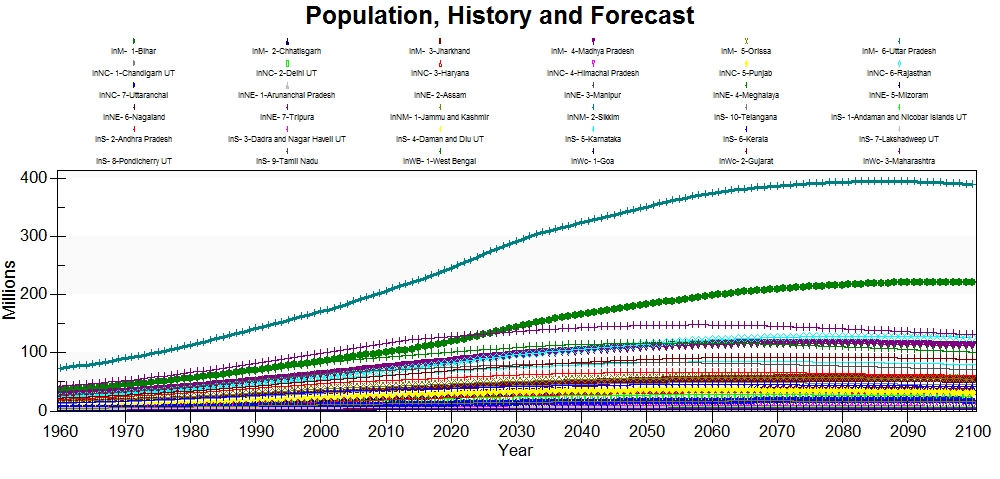 Uttar Pradesh is the most populated state in India historically and through the end of the forecast's time horizon. Maharashtra is the second most highly populated state historically, but population growth is slowing and is forecast to plateau around 2025. Historically, Bihar has the third largest population in all of India and due to larger population growth rates, it is forecast to become the second largest state in India around 2025. The difference between Maharashtra and Bihar's population will increase through the end of the time horizon.
Uttar Pradesh is the most populated state in India historically and through the end of the forecast's time horizon. Maharashtra is the second most highly populated state historically, but population growth is slowing and is forecast to plateau around 2025. Historically, Bihar has the third largest population in all of India and due to larger population growth rates, it is forecast to become the second largest state in India around 2025. The difference between Maharashtra and Bihar's population will increase through the end of the time horizon.
Typically, the official data source for subnational population is the national census. However, India's Census is conducted every ten years and there appears to not be any annual estimates available from this source. This makes the census data quite out of data being that the last census was conducted in 2011, and we will not be able to update this until after the 2021 census. Thus an alternative source is being used to ensure that population data is available to be updated more frequently than every decade.
Age-Sex Cohorts
The age-sex cohort data came from the 2011 Census. This data was published in single year cohorts and was aggregated into the five-year cohorts that are used in the model. The state of Telangana was estimated by summing the districts that make up present day Telangana and Andhra Pradesh was estimated in the same manner.
PopulationUrban
India's urban population series came from the Report of the Prime Minister's High Level Committee and the series is from 1991, 2010-2011. Telangana's urban population was found on the state's website and was used to estimate Andhra Pradesh's urban population.
Households
Household data came from the Ministry of Planning and Development from 2014. Despite it being 2014 data, Telangana did not have data. To estimate Telangana and Andhra Pradesh the population ratios from 2011 were applied to the household data. The data is in households rather than millions of households and is normalized using ApplyMultAll.
TFRMedUNPD
Total fertility rates were pulled from the DevInfo database and the series runs from 1971 through 2013. The DevInfo database states the original source of this data as the ORGI_Sample Registration System Reports, Office of the Registrar General and Census Commissioner, Ministry of Home Affairs, Government of India, New Delhi.
ForecastNetMigrationRateUNPD
The subregional migration rates for India were calculated using net migration from the 2001 Census. The 2011 Census has not yet released migration data.
PopulationYouthDepend%
The original source for this data was not recorded, but it appears to have originated from the 2011 Census.
